Slogan cancellations: Telegrams: Speedy, Reliable, Effective.
- Home, index, site details
- Australia 1901-1988
- New South Wales
- Overview of NSW
- Telegraph lines
- Telegraph Offices
- Date stamps
- Forms
- Envelopes
- Rates
- Stamps
- Queensland
- Overview of Qld
- Telegraph lines
- Telegraph offices
- Date stamps
- Forms
- Envelopes
- Rates
- Stamps
- South Australia
- Overview of SA
- Telegraph lines
- Telegraph Offices
- Date stamps
- Forms
- Envelopes
- Rates
- Stamps
- Tasmania
- Overview of Tasmania
- General developments
- Reports
- Organisation
- Telegraph lines
- Telegraph Offices
- Date stamps
- Railway lines
- Forms
- Envelopes
- Rates
- Stamps
- Overview of Tasmania
- Victoria
- Overview of Vic.
- Telegraph lines
- Telegraph offices
- Date stamps
- Forms
- Envelopes
- Rates
- Stamps
- Ephemera
- Western Australia
- Overview of WA
- Telegraph lines
- Telegraph Offices
- Date stamps
- Forms
- Envelopes
- Rates
- Stamps
| A slogan postmark advertising the benefits of using TELEGRAMS: SPEEDY, RELIABLE, EFFECTIVE was introduced in mid-1940 but it was only available for a short time: Earliest recorded date: 4 September 1939 at Sydney. Latest recorded date (1st issue): 7 May 1941 at Chatswood. Its use in this period is now rated scarce. Wallen claims this slogan was introduced in 1938 but there is no recorded evidence of its use before the second half of 1939. |
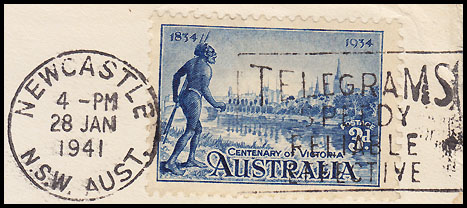 |
The slogan was re-introduced after the War on three very disparate occasions at only a few Post Offices:
The height of the slogan was 20 mm. The width varied. There are 30 examples of this slogan in the Census. Three main dies were developed. These can be described as follows: |
|
| Die 1: | 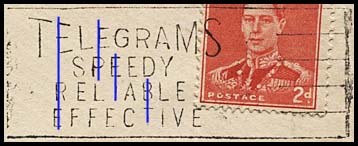 |
|
| Die 2: | 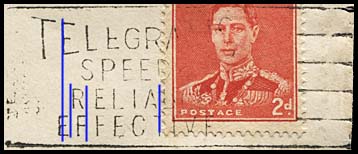 |
Only recorded on one cover - Sydney 1 on 24 April 1941 IN PILLAR BOX (latest recorded date of any use of this slogan). |
| Die 3: |  |
|
Other differences in the formats were:
- the date stamp component varied between a circle (21 mm diameter) for about one third of the date stamps (all of those used in small urban or in country locations) and a rectangle (23 × 22 mm);
- the inscription at the base of the date stamp component: about half had a State reference, a quarter had PAID and the remaining quarter (all in NSW had type of box).
Ashfield, NSW.
|
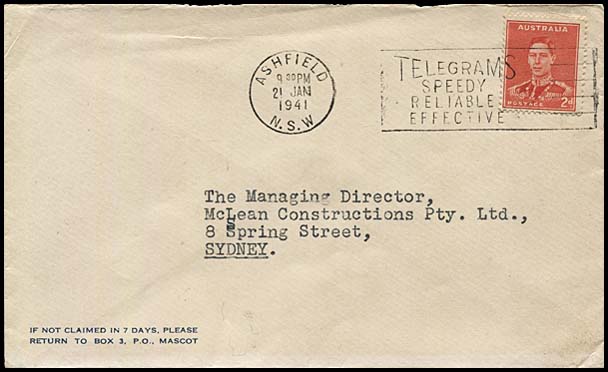 21 January 1941. |
Bondi Junction, NSW.
|
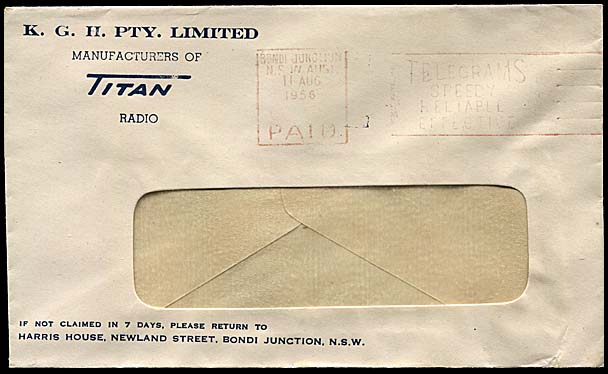 11 August 1956. On a advertising window envelope for K.G.H. |
Burwood, NSW.
|
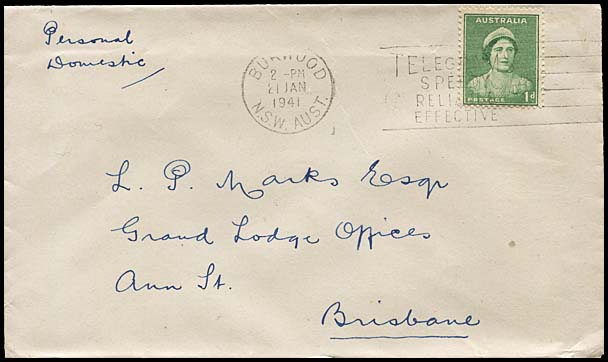 21 January 1941. |
Chatswood, NSW.
|
|
Dubbo.
|
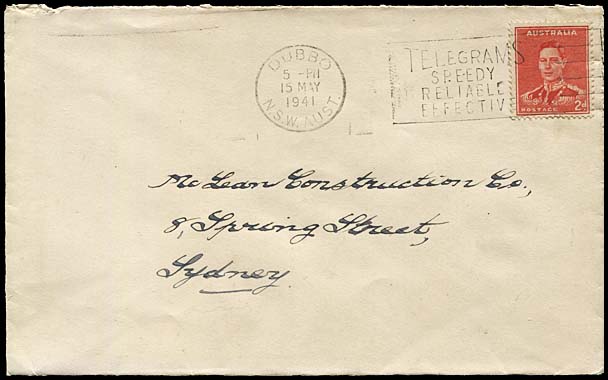 15 May 1941. |
Melbourne.
|
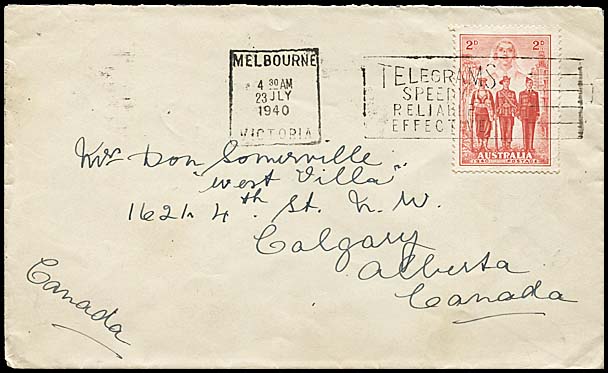 23 July 1940. |
Mt. Gambier, S.A.
|
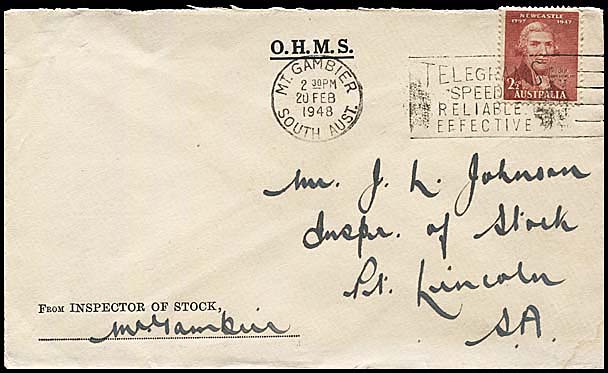 20 February 1948. |
Newcastle, N S.W.
|
 28 January 1941 on a censored letter to Detroit, USA. |
Port Adelaide.
|
 24 April 1956. |
Sydney.
|
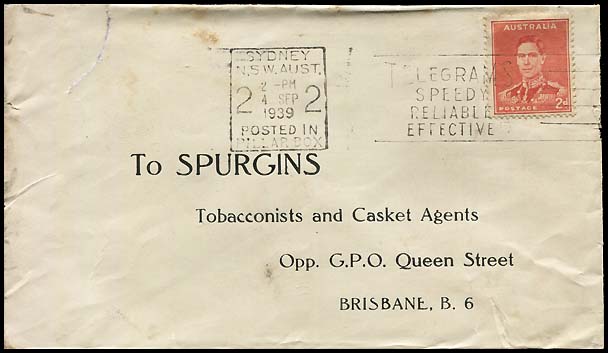 4 September 1939. |
